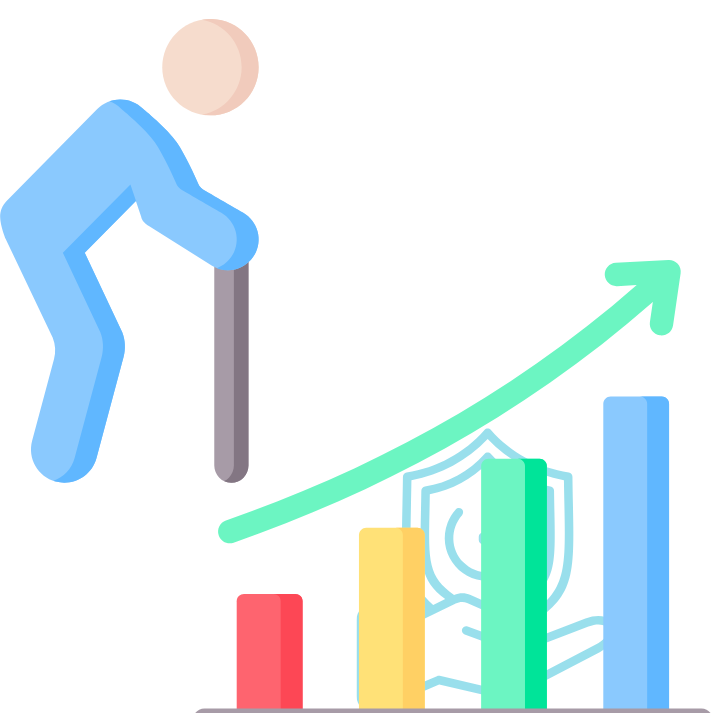Can We Slow Aging? The State of Longevity Research in 2025
In 2025, the quest to extend human healthspan—and potentially lifespan—is no longer confined to science fiction. Thanks to a convergence of breakthroughs in biotechnology, artificial intelligence, and cellular biology, longevity research is entering a golden age. The latest studies indicate that slowing, halting, or even partially reversing aging may be achievable through targeted interventions.

Global investment in longevity technologies has surpassed $50 billion, with support from institutions like the NIH, the EU’s Horizon Health Initiative, and private entities such as Altos Labs, Calico (Alphabet), and the Hevolution Foundation. With regulatory support increasing and public interest booming, aging is now viewed not just as a natural process, but as a modifiable condition.
1. Senolytics: Clearing Out the Cellular Junk
Senescent cells—commonly referred to as “zombie cells”—are dysfunctional cells that no longer divide but don’t die off. These cells accumulate with age and secrete pro-inflammatory molecules that damage surrounding tissue.
In 2025, senolytics (compounds that selectively eliminate senescent cells) have reached Phase III clinical trials for age-related diseases, including:
- Unity Biotechnology’s UBX1325, showing significant improvement in vision loss due to diabetic retinopathy by targeting senescent cells in the retina (Nature Aging, Feb 2025).
- Mayo Clinic’s Fisetin-based combo therapy, which reduced inflammatory markers and improved physical function in elderly patients (Cell Metabolism, Jan 2025).
Researchers believe widespread senolytic use could become routine in anti-aging protocols within five years.
2. Epigenetic Reprogramming: Resetting the Biological Clock
Biological aging is tied not only to time but also to epigenetic drift—the chemical modifications that turn genes on or off. In 2025, partial epigenetic reprogramming, using Yamanaka factors (specifically OSK: Oct4, Sox2, Klf4), is a leading area of study.
- Rejuvenate Bio, a Harvard spin-off, announced a major breakthrough in canine models, showing that targeted OSK gene therapy extended lifespan by 25% and reversed cardiac aging (Science Translational Medicine, March 2025).
- Altos Labs is now running human safety trials for OSK-based therapies targeting skin and liver rejuvenation (MIT Technology Review, April 2025).
While full reprogramming remains risky (linked to tumorigenesis), partial reprogramming offers a promising middle ground with minimal side effects.
3. AI-Driven Biomarker Discovery
In 2025, AI is playing a crucial role in aging research by helping identify reliable biomarkers of biological age and predicting individual responses to anti-aging treatments.
- Deep Longevity, in collaboration with Hong Kong University, released MindAge 2.0, a mental and emotional aging predictor using AI and psychological profiling (Nature Digital Medicine, Jan 2025).
- Google DeepMind’s Proteomics Atlas can now analyze over 10,000 protein structures in plasma to predict aging trajectories, enabling personalized longevity prescriptions (Lancet Digital Health, Feb 2025).
These tools are guiding clinicians toward tailored interventions, turning aging into a measurable and trackable condition.
4. Nutritional and Pharmacological Interventions
- Rapamycin: 2025 trials in humans have shown a 12% reduction in all-cause mortality markers in adults over 60 (JAMA Geriatrics, March 2025).
- NAD+ Precursors (like NMN and NR): Confirmed to improve mitochondrial function and muscle strength, especially in women post-menopause (Aging Cell, April 2025).
- Metformin: The long-anticipated TAME (Targeting Aging with Metformin) trial has published its initial results, showing delayed onset of cognitive decline and type 2 diabetes in aging populations (New England Journal of Medicine, Feb 2025).
Several compounds continue to dominate the anti-aging conversation:
5. Longevity Lifestyle: Sleep, Light, and Chronobiology
Modern longevity is not just about pills—it’s about aligning with our biology:
- Time-restricted eating: A major meta-analysis (BMJ, Jan 2025) confirms that eating within a 10-hour window improves insulin sensitivity and lowers inflammation.
- Blue-light regulation: Wearables that manage melatonin release via circadian-aware lighting have become common for aging populations.
- Deep sleep enhancers, including EEG-based feedback loops and auditory stimulation, are now integrated into smart home devices.
Challenges Ahead
Despite these advances, aging is still a deeply complex and multifactorial process. Critics warn against overpromising or commercial hype. Ethical questions are also emerging:
- Who will access these therapies?
- Will longevity divide become a socioeconomic fault line?
- How do we redefine health insurance and pensions in a world where living to 100+ is common?
Governments and regulators are starting to catch up. In 2025, the WHO launched its Global Longevity Strategy, and the EU has formed a Longevity Regulation Council.
Conclusion: A Future Where Aging Is Optional?
While we’re not immortal yet, 2025 marks a turning point in how humanity understands and approaches aging. With senolytics, gene reprogramming, AI-driven insights, and personalized health regimens, we’re moving toward a world where growing old doesn’t necessarily mean growing frail.
The big question is no longer “Can we live longer?” but “How well can we live—and for how long?”
With science catching up to ambition, the dream of living healthier, longer lives is quickly becoming a reality within reach.



